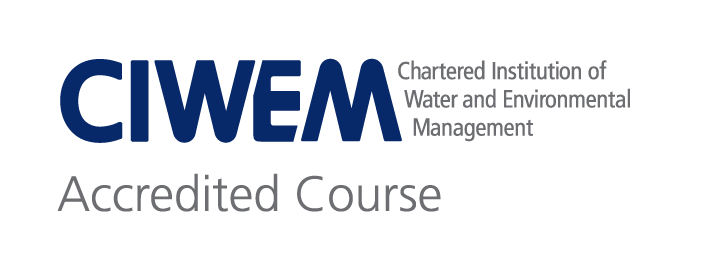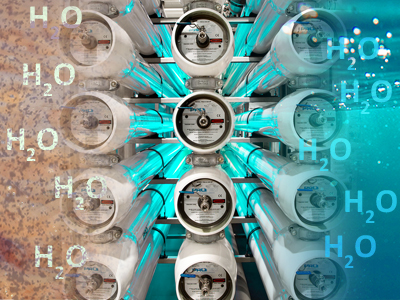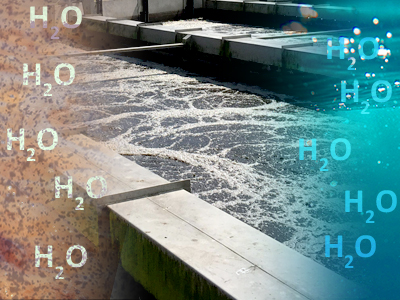Overview
Course video
Learn the principles, potentials, reactor concepts, and troubleshooting techniques for anaerobic wastewater treatment.
Anaerobic wastewater treatment is one of the most energy-efficient technologies for treating wastewater. With minimal energy requirements and the conversion of organic pollutants into renewable energy-rich biogas, there’s a double energy gain – a serious benefit both for now and in the future.
In this course you will learn about this state-of-the-art technology from anaerobic experts. You will also develop your skills in anaerobic reactor design and operation to better handle the current environmental challenges and global energy crisis.
After taking this course, you will not only understand the potentials of the system but also how to make process designs, evaluate anaerobic treatment processes, and operate high-rate anaerobic reactors efficiently.
Anaerobic Treatment
Anaerobic digestion converts organic waste into a gaseous energy carrier without consuming (fossil) energy. The process is commonly used in engineered applications for treating organically polluted (industrial) wastewater, organic solid wastes and even sewage. However, its potentials are still largely unrealized, and many industries still install energy-demanding activated sludge processes, in situations where anaerobic technologies could have solved their problems and brought benefits to the industry.
After decades of successful operational experience, nowadays over 5,000 reactors are installed worldwide. Modern high-rate reactors are very compact and allow volumetric loading rates reaching 30-40 kg COD/m3 per day, with an energy output up to 400 MJ/m3 reactor per day. The excess sludge production from these reactors is low in amount and very high in quality. It even has a market value!
For specific industrial wastewaters a more profound understanding of anaerobic conversion processes is required especially if an anaerobic reactor suffers from sudden failures. A well-trained process engineer has a good knowledge base, can perform laboratory tests, and can evaluate why failures occur. With the correct diagnostics, remedial actions can be proposed to regain the full potential benefits of a high-rate anaerobic system.
Highly Interactive
This course offers a mix of academic knowledge and empirical insights obtained at full-scale plants. It includes presentations of the world market leaders Paques B.V. and Biothane-Veolia, and it offers a virtual excursion to a full-scale high-rate anaerobic reactor.
You will also receive weekly feedback videos and benefit from peer-review activities, engaging discussions and live webinars.
After successfully completing this course, you will be able to:
- Explain the concepts and advantages of high-rate anaerobic treatment
- Make a mass balance over you anaerobic reactor and calculate the methane production potential based on the residual water characteristics
- Recognize the key factors affecting high-rate anaerobic treatment
- Identify the development and the key features of high-rate anaerobic reactors, and identify the challenges and potentials for a specific high-rate anaerobic technology
- Acquire the ability to design upflow anaerobic sludge blanket (UASB) reactors under specific conditions, and identify the procedures needed to start-up UASB reactors with low grade seed material
- Identify the most important anaerobic laboratory tests, acquire the theoretical knowledge to assess the maximum capacity of anaerobic sludge, and the biomethane or toxicity potential of waste(waters)
- Recognize the current application of high-rate anaerobic treatment technologies in practice.
This course is accredited by The Chartered Institution of Water and Environmental Management (CIWEM) and supported by the International Water Association (IWA).

Honored for Water Sector Impact
Professor Jules van Lier has been awarded the prestigious William Dunbar Medal 2025 in recognition of his exceptional contributions to applied technical advancements in the water sector. Read more
Details
Is this course for you?
This course will help you make the first steps towards becoming an expert in this cost- and energy-efficient treatment solution.
The course is ideal for students, academics, consultants, and practitioners in the field of environmental engineering and/or sanitary engineering. It will deepen your knowledge of anaerobic wastewater treatment and provide valuable background information for anybody interested in the field.
Participants from developing countries and countries in transition are especially welcome, as this is the right moment to acquaint yourselves with and choose more sustainable solutions in waste and wastewater management, establishing your own energy factory.
Since energy benefits may amount to several million euros per year, end-users working in the food and beverage industry, chemical companies, pulp and paper mills, etc., can also benefit from the course.
Long standing experience
This course is based on 50 years of experience in high-rate anaerobic wastewater treatment. This experience was built up at both Wageningen University, while working with professor Lettinga (the founder of UASB technology), and Delft University of Technology.
The main course instructor, Jules van Lier, is a world-renowned expert in the field and has several decades of experience in conducting similar courses in different countries.
Course Syllabus
Week 1: Introduction to High-Rate Anaerobic Technology and Its Fundamentals
This week‘s content presents the current context and explains the difference between anaerobic treatment and aerobic treatment technologies. We will introduce you to the basic concepts of anaerobic treatment technology with a focus on the microbiology and biochemistry involved in the treatment. The energy recovery potential and the COD balance in the anaerobic treatment are also explained.
Week 2: Physicochemical Aspects of High-Rate Anaerobic Reactor Technology
In this week, the environmental factors affecting anaerobic treatment will be discussed, including suspended solids, temperature, nutrient availability, pH and buffer capacity, presence of oxygenated anions (such as sulphate). Additionally, the treatment of sulphate-rich wastewater will be explained.
Week 3: High-Rate Anaerobic Reactors (HRAR)
In this week, we will start with an overview of High-Rate Anaerobic Reactor technology and introduce the several configurations of HRAR. There will be a special focus on the characteristics and design of the most used reactors, the UASB and expanded granular sludge bed (EGSB) reactors. Besides, the new developments of HRAR from the world-leading companies will be introduced, the potential of anaerobic membrane reactors under extreme conditions is discussed.
Week 4: UASB Design and Start-up
In this week, the focus will be on the conceptual design and start-up of the most used HRAR, the UASB reactor. The course content in week 4 will allow you to apply the knowledge you gained from the previous weeks to the operational field. A detailed introduction to granular sludge, its advantages, and the condition for growing granular sludge is presented. Practical guidelines summarized from long-term experience are also provided.
Week 5: Anaerobic Laboratory Tests
In this week the characterization of wastewater as well as methanogenic sludge will be covered, followed by the explanation of laboratory tests, including specific methanogenic activity (SMA), biomethane potential (BMP) and Toxicity tests, that are applied to facilitate the reactor start-up and check the performance of a reactor. Practical guidelines for the laboratory tests are provided and equipment for biogas measurement is introduced.
Week 6: Application of High-Rate Anaerobic Reactors
In this week two guest lecturers from Biothane-Veolia and Paques B. V. will provide case studies on the various high-rate anaerobic reactors developed by these two world-leading companies. Additionally, a virtual tour to the Sloe wastewater treatment plant is provided, to give you some impression of a currently-operating industrial wastewater treatment plant.
Assessment & Assignments
Participants are expected to complete the following assignments:
- Mid-term exam
- Final assignment: Design an UASB reactor
Recommended literature:
- Van Lier, J.B., N. Mahmoud and G. Zeeman (2020). Anaerobic Wastewater Treatment. In: G. Chen, M.C.M. van Loosdrecht, G.A. Ekama, D. Brdjanovic (eds.), Biological Wastewater Treatment, Principles, Modelling and Design, 2nd Edition, Chapter 16, ISBN: 9781789060355, IWA Publishing, London, UK, p. 701-756.
- Van Lier, J.B., F. P. van der Zee, C.T.M.J. Frijters and M. E. Ersahin (2015). Celebrating 40 Years Anaerobic Sludge Bed Reactors for Industrial Wastewater Treatment. Reviews in Environmental Science and Bio/technology, 14(4), 681-702. DOI 10.1007/s11157-015-9375-5
Qualifications
Certificates
If you successfully complete this course you will earn a professional education certificate and you are eligible to receive 3.0 Continuing Education Units (CEUs).
CPD Accreditation
This course is accredited by The Chartered Institution of Water and Environmental Management (CIWEM). If you successfully complete this course you will be entitled to 30 Continuing Professional Development (CPD) credits.
Chartered Engineering Competences
All our online courses and programs have been matched to the competences determined by KIVI’s Competence Structure, a common frame of reference for everyone, across all disciplines, levels and roles.
These competences apply to this course:
- A1: Extend your theoretical knowledge of new and advancing technologies.
- B3: Manage implementation of design solutions, and evaluate their effectiveness.
- E3: Undertake engineering activities in a way that contributes to sustainable development and a circular economy.
Admission
This course is primarily geared towards working professionals.
Expected prior knowledge
- basic knowledge of (bio)chemistry, chemical conversions, redox reactions, formation of precipitates
- knowledge of wastewater treatment in general
- basic knowledge of process design and reactor technology
Contact
If you have any questions about this course or the TU Delft online learning environment, please visit our Help & Support page.



